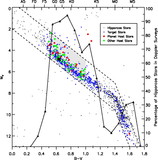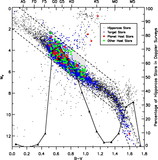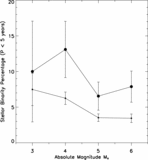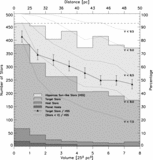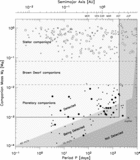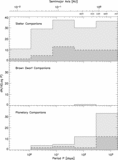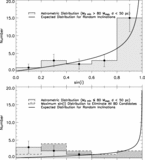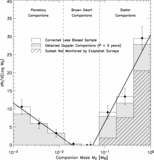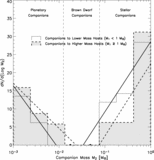Image Details
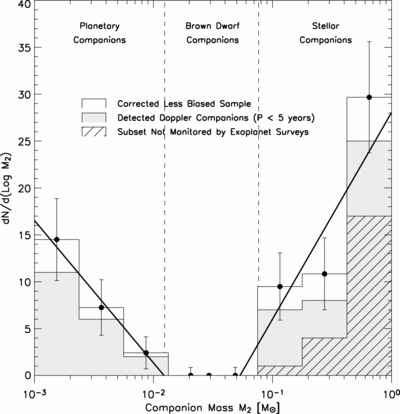
Caption: Fig. 8.
Brown dwarf desert in close sample. Histogram of the companions to Sun‐like stars closer than 25 pc plotted against mass. The gray histogram is made up of Doppler‐detected companions in our less biased (﹩P< 5﹩ yr and ﹩M_{2}> 10^{-3}\ M_{\odot }﹩) sample. The corrected version of this less biased sample includes an extra seven probable SB1 stars from (Jones et al. 2002; see Table 2, footnote e) and three extra stars from an asymmetry in the host declination distribution (Table 2, footnote f). The planetary mass companions are also renormalized to account for the small number of Hipparcos Sun‐like stars that are not being Doppler monitored (21% renormalization; Table 2, footnote d) and a one‐planet correction for the undersampling of the lowest mass bin due to the overlap with the "being detected" region (Table 2, footnote c). The hatched histogram is the subset of detected companions to hosts that are not included on any of the exoplanet search target lists and hence shows the extent to which the exoplanet target lists are biased against the detection of stellar companions. Since instruments with a radial velocity sensitivity ﹩K_{S}\leq 40﹩ m s−1 (see eq. [2] of Appendix) were used for all the companions, we expect no other substantial biases to affect the relative amplitudes of the stellar companions on the RHS and the planetary companions on the LHS. The brown dwarf mass range is empty.
Copyright and Terms & Conditions
© 2006. The American Astronomical Society. All rights reserved. Printed in U.S.A.


